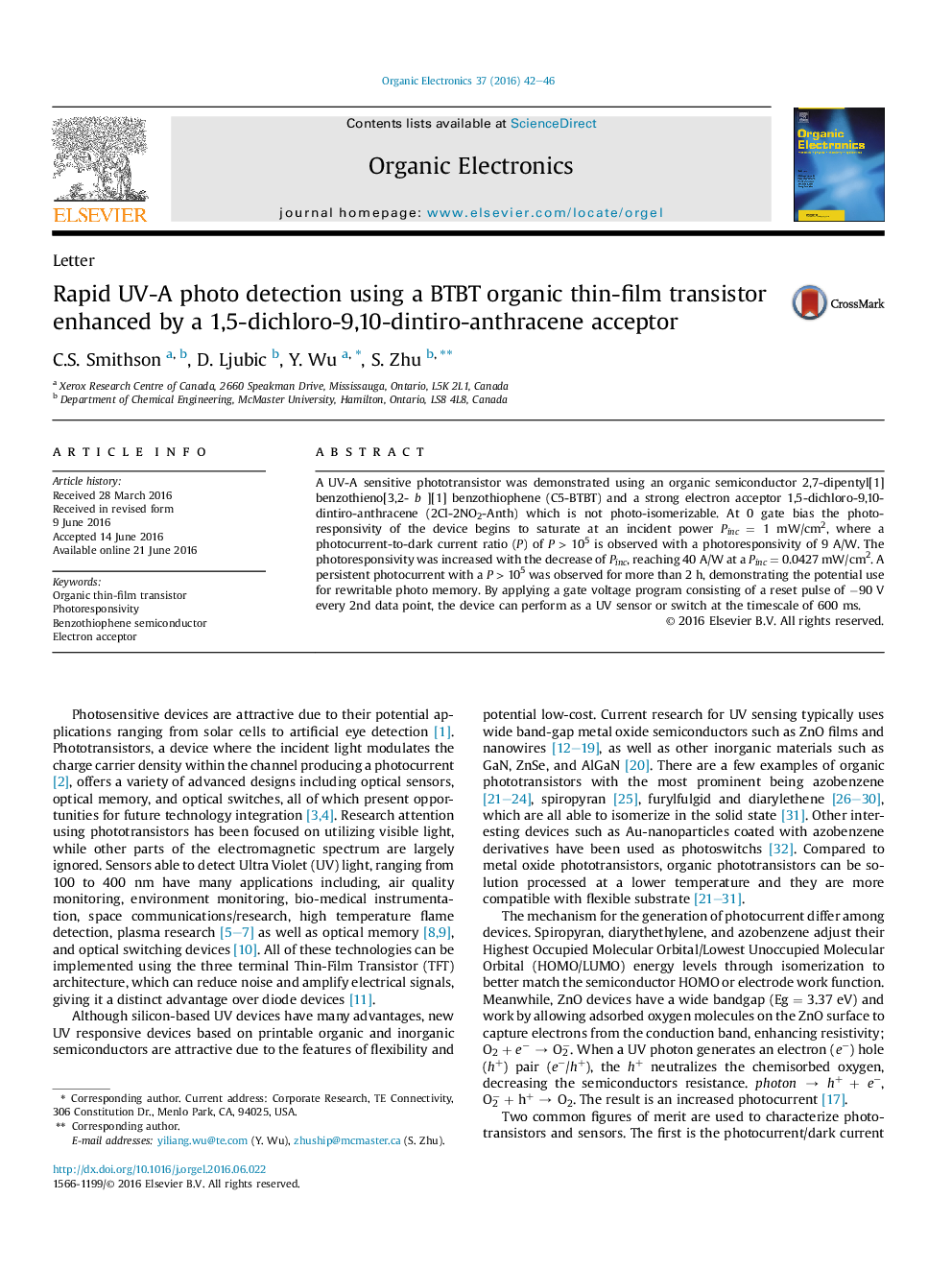| Article ID | Journal | Published Year | Pages | File Type |
|---|---|---|---|---|
| 1264654 | Organic Electronics | 2016 | 5 Pages |
•A solution-processed organic phototransistor with an electron acceptor which is not photoisomerizable.•A short response time (∼1.6 s) and a high photocurrent-to-dark current ratio (>105) over a long time.•Demonstrated a photo-sensor or switching device with a programmed gate bias.
A UV-A sensitive phototransistor was demonstrated using an organic semiconductor 2,7-dipentyl[1]benzothieno[3,2- b ][1] benzothiophene (C5-BTBT) and a strong electron acceptor 1,5-dichloro-9,10-dintiro-anthracene (2Cl-2NO2-Anth) which is not photo-isomerizable. At 0 gate bias the photoresponsivity of the device begins to saturate at an incident power Pinc = 1 mW/cm2, where a photocurrent-to-dark current ratio (P) of P > 105 is observed with a photoresponsivity of 9 A/W. The photoresponsivity was increased with the decrease of Pinc, reaching 40 A/W at a Pinc = 0.0427 mW/cm2. A persistent photocurrent with a P > 105 was observed for more than 2 h, demonstrating the potential use for rewritable photo memory. By applying a gate voltage program consisting of a reset pulse of −90 V every 2nd data point, the device can perform as a UV sensor or switch at the timescale of 600 ms.
Graphical abstractFigure optionsDownload full-size imageDownload as PowerPoint slide
